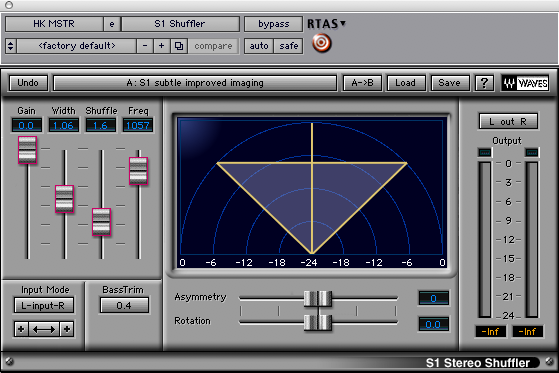BREVERB offers high-quality musical reverb processing with a flexibility previously available only in extremely expensive hardware reverbs. BREVERB is also engineered to achieve the highest levels of musicality helping you to place it perfectly in any mix.
Unlike convolution reverbs (a reverb that reproduces the real impulse response of a real hall) which recently have gained a lot of popularity, BREVERB allows you to vary the nature of reverberation through several parameters, giving you the flexibility and real-time feedback that has always been a prerogative of the most famous studio digital reverbs.
Unlike convolution reverbs (a reverb that reproduces the real impulse response of a real hall) which recently have gained a lot of popularity, BREVERB allows you to vary the nature of reverberation through several parameters, giving you the flexibility and real-time feedback that has always been a prerogative of the most famous studio digital reverbs.
Features
- 4 main Algorithms: Hall, Room, Plate and Inverse
- Modeled after the most sought-after hardware units
- Each Algorithm is engineered with no compromises in order to achieve maximum quality
- Full EQ section to tailor BREVERB frequency response
- Extended Nonlinear section to forge reverberation shape
- "Motion" parameters add liveness, musicality and the "air movement" of a real room
- The analog output section of the hardware unit has been emulated for reproducing their personality
- With dynamic parameter, the input level can control Time, Mix and EQ
- Two different user interface modes: compact and hardware-like
- Six fully assignable and automatable hardware-like faders
- Full automation through host sequencers
- Realtime Midi control off all paramters through the six faders
- No additional latency introduced
- Very low CPU usage: 120 stereo instances safely opened on a Core2Duo 2.4 GHz MacBookPro
- Host-sync of all rates and times
I will do a full review on the BREVERB very soon including actual mix use.















